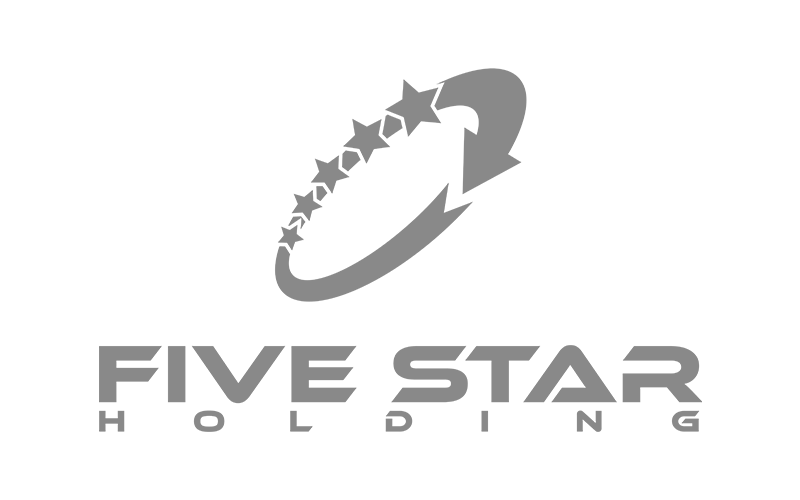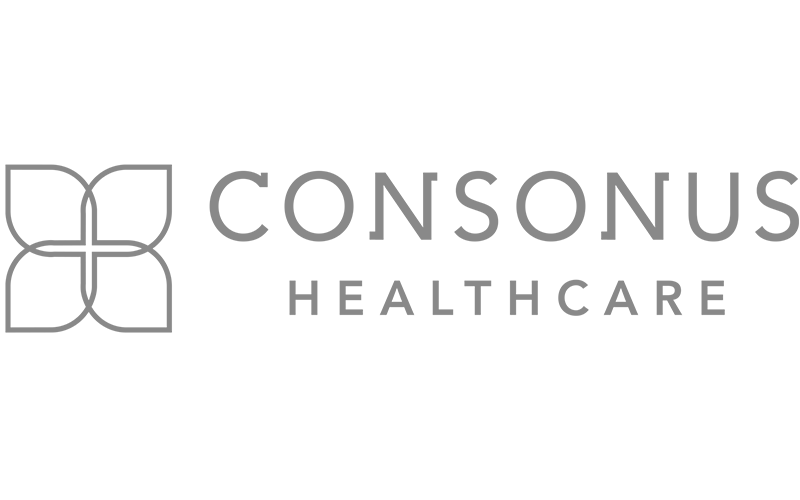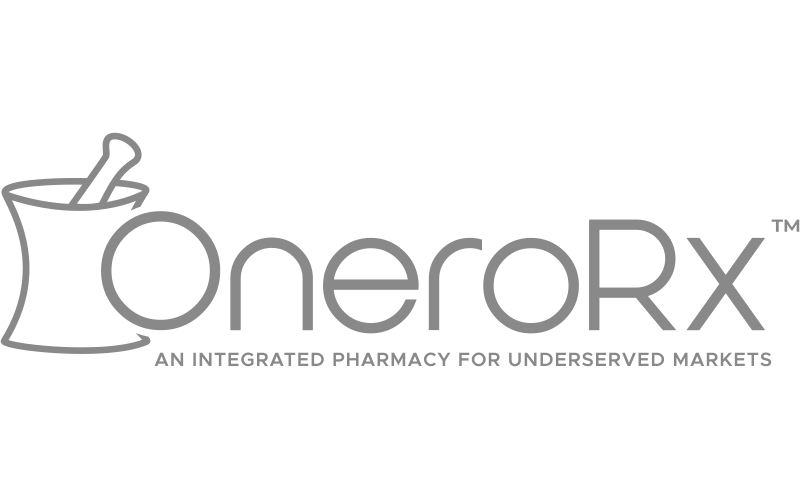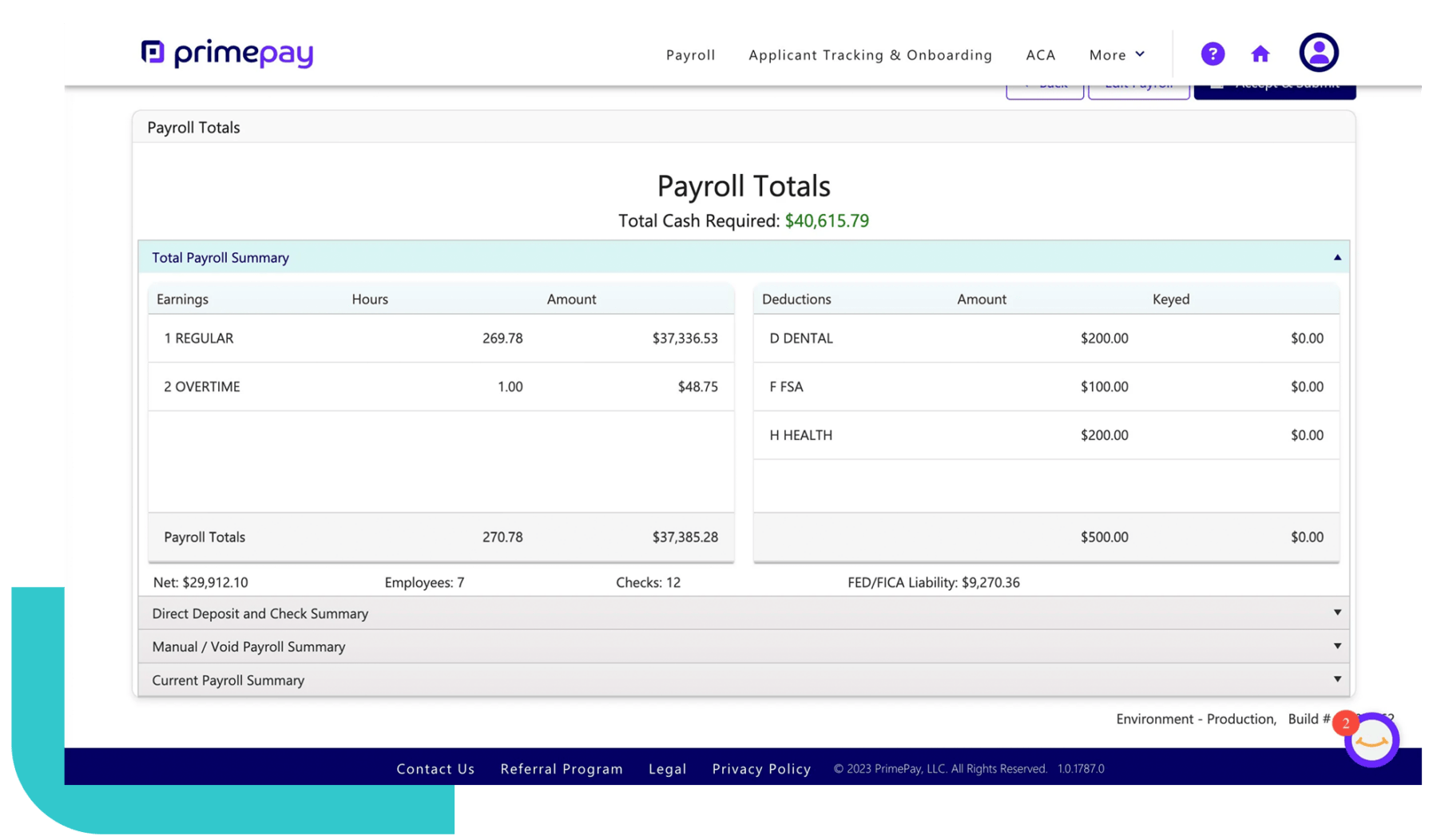
Payroll Software for Small and Midsize Businesses
PrimePay Payroll
Payroll is more than just an item to cross off on your to-do list. To us, it’s an opportunity to elevate the ordinary and create a lasting impression on your business’ very core – Your people.
Payroll Software Product Description
PrimePay offers payroll software that is simple to use, accurate, compliant, and integrates seamlessly with time-tracking tools. Small business owners and medium-sized businesses can save time and money utilizing all of our payroll features.
Payroll Software Core Features
- Process Payroll & Automate Payroll Taxes
- On-Demand Pay
- Employee Self-Service
- Analytics & Reporting
Why PrimePay?
What makes PrimePay different from the competition:
- Easily handles payroll complexities
- Simple & modern software dashboard
- A price that makes sense
- Options to meet all payroll needs
Payroll Software that Just Works — Always.
As payroll technology becomes more accessible, cost-effective, and simplified for end users, more businesses are opting to run their own payroll versus outsourcing.
As a leader in cloud-based payroll and client experience for 37+ years, PrimePay’s payroll technology streamlines payroll processing for greater control, efficiency, and understanding of your business.
Cloud-Based Payroll Solutions For Your Top Payroll Challenges
Software for Payroll and HR That Work Together
Integrated
PrimePay’s payroll module integrates seamlessly with our time and HR modules, as well as other third-party providers, for a scalable solution that can adapt and grow with your business.
Popular Features:
- Unlimited Payrolls
- Direct Deposit & Debit Card
- Bank Reconciliation
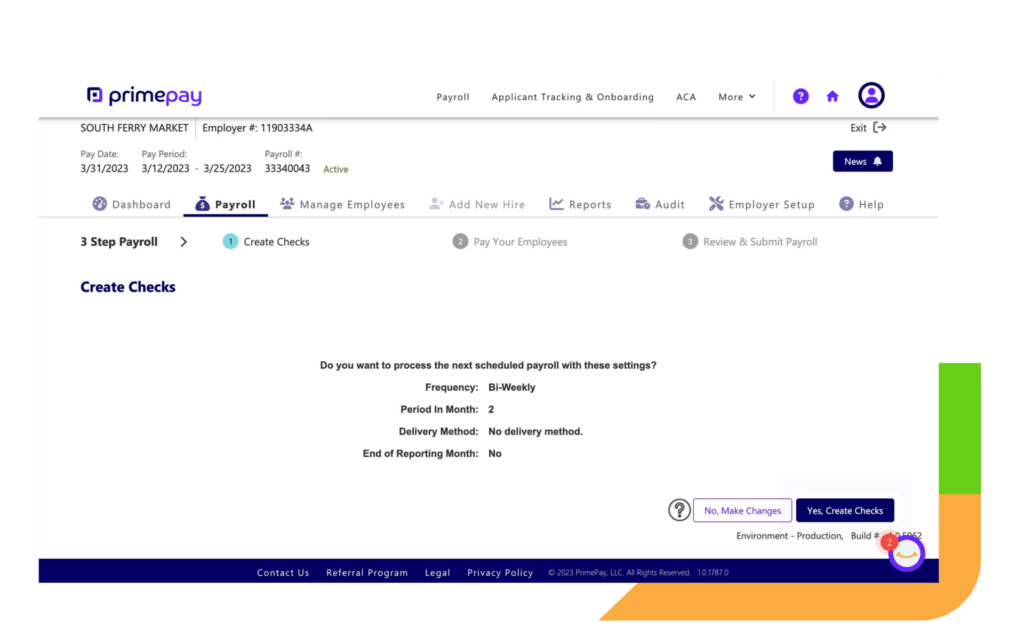
Payroll Software To Automate Time Consuming Tasks
Automated
Cut down on manual work and reduce pay errors with automated payroll processing. Ensure all employee deductions, state tax and federal tax data are captured and included in your payroll run for accurate worker pay every time.
Popular Features:
- Automated Payroll
- Time-off Management
- Accruals
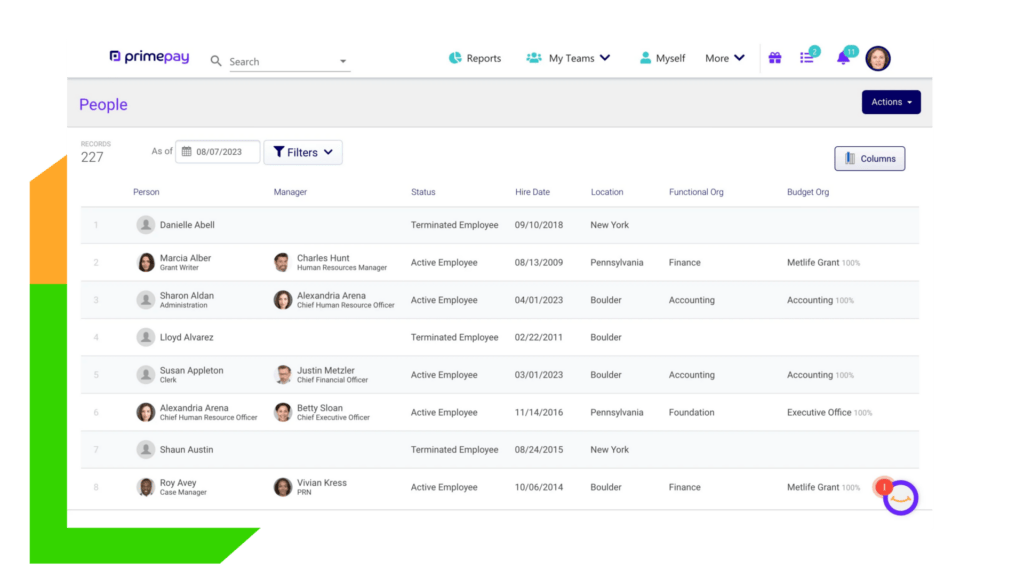
Payroll Software that Helps with Taxes, Compliance, and Regulations
Compliant
Ensure accurate employee classification, adherence to wage and hour laws, and seamless tax withholding and filing, helping businesses stay compliant with federal, state, and local regulations. Supports proper management of contribution to employee benefits and timely, compliant payroll processing to help protect against risks.
Popular Features:
- Automation for final paycheck rules around terminations and resignations
- Status, Worker Type, Employee Number on each employee profile
- Payroll Profile & Compensation Profile
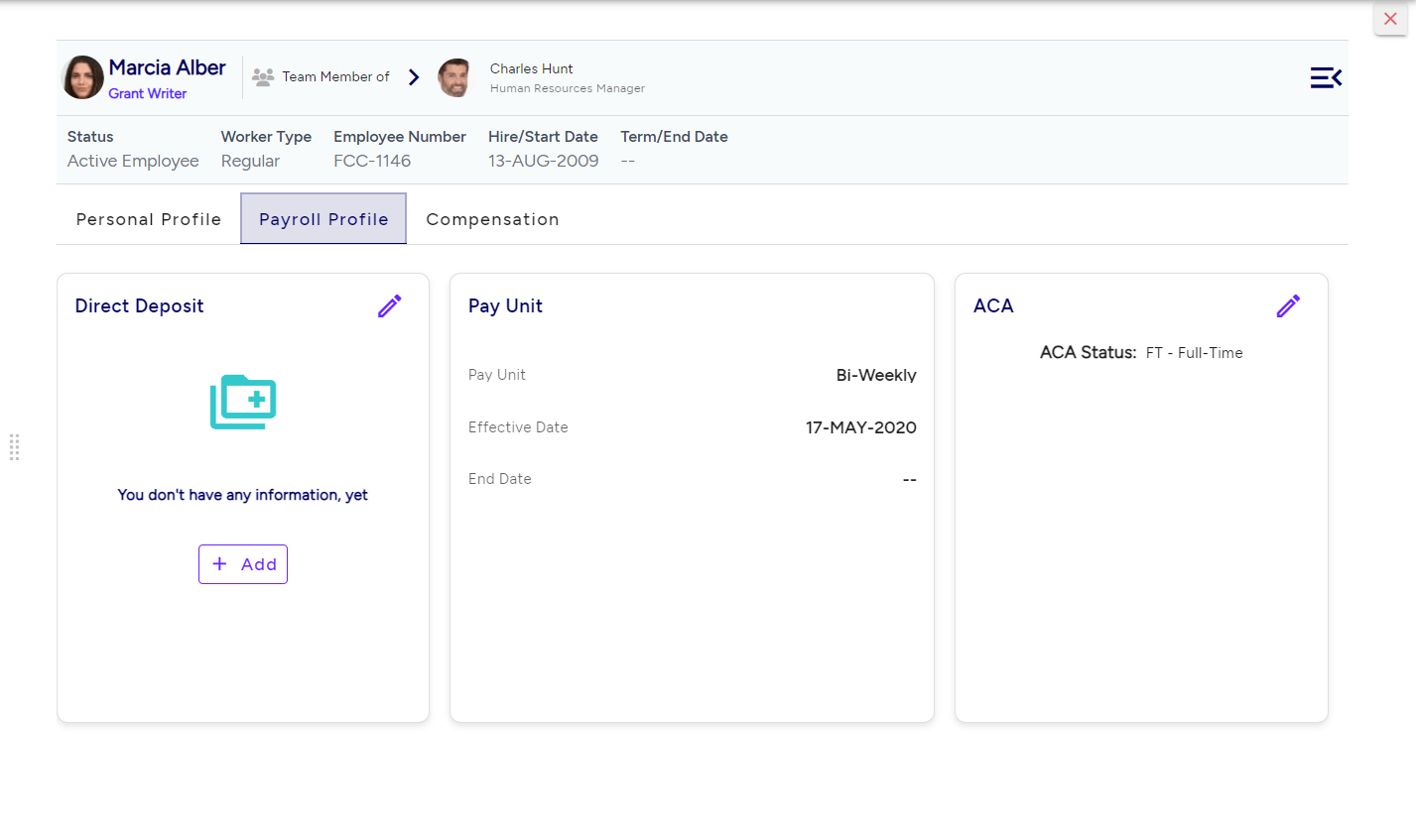
Customizable Payroll Reports that Turn Payroll Data into Clear Business Insights
Robust
Robust Detailed payroll reporting gives businesses insights into wages, taxes, and benefits. 50+ out-of-the-box reports or customizable reports help track payroll trends and ensure compliance with federal, state, and local regulations.
Popular Features:
- FICA Tip Credit, Payroll Journal, GL Reporting
- Taxable Wages by Person, Date Rang, Tax, or multiple people
- Views by Payroll, Employer, Year End and Tax Returns
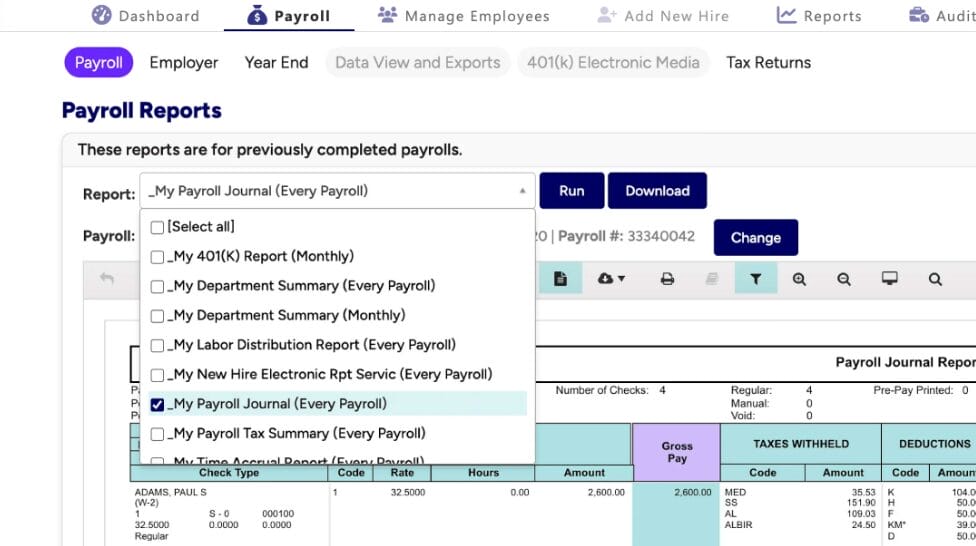
Business Payroll Solutions to Improve the Employee Experience
Employee Centric
With PrimePay, employees can access their earnings as soon as they clock out and don’t need to wait until payday. Offering on-demand pay as a benefit can increase employee satisfaction and retention, as it provides your team with greater financial flexibility and control.
Popular Features:
- Employee Self Service
- Employee Mobile App
- On-Demand Pay
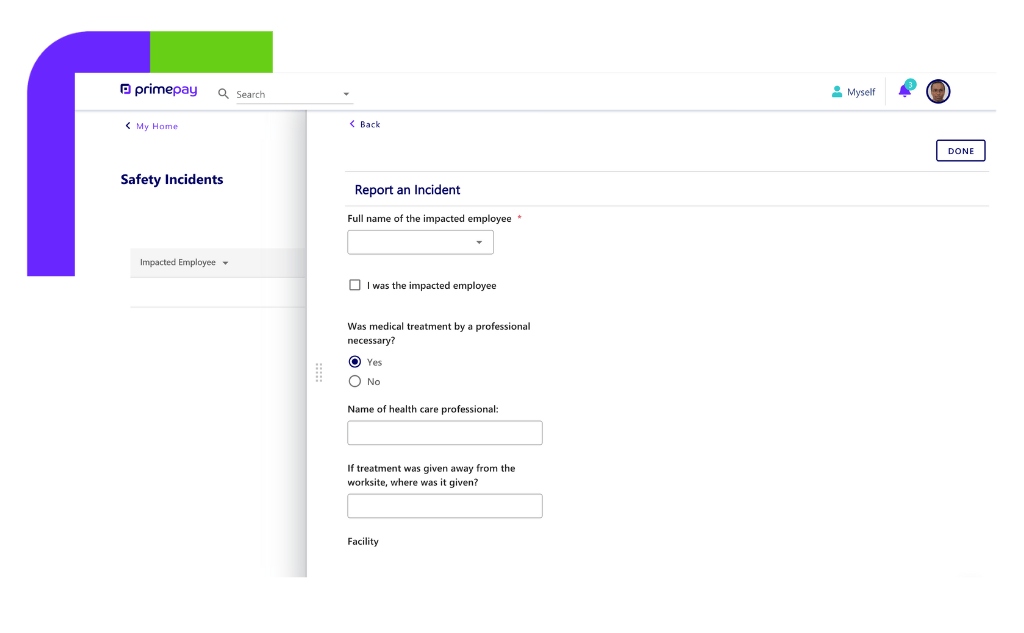
Payroll Software Features
Time & Attendance
Track employee hours, attendance, and manage leave requests.
Explore Time & AttendanceOn-Demand Pay
Offer wage advances to employees prior to payday at no cost to them, or you.
Explore On-Demand PayWorkers' Comp Administration
Electronic documentation, claim management, and tracking with provider.
What Our Clients Say
See all our Client StoriesPayroll Software FAQs
What are the challenges in payroll and how can payroll software simplify them?
Some business payroll challenges include compliance with laws and regulations, managing a hybrid workforce, manual methods, and complex systems. With the right HR and payroll technology solution built for the specific needs of small businesses or established businesses alike, you can streamline and simplify the entire payroll function for your business. A single, automated system with paperless workflows and centralized payroll- and HR-related data allows you to:
- Accurately calculate payroll, taxes, benefits, and more — and pay employees on time
- Easily locate, manage, and update employee and payroll data and share it with other areas of the business
- Stay compliant with pay and tax laws wherever you have employees
- Gain much-needed visibility across your workforce, run payroll reports, and analyze your people operations
- Grow your business as needed without worry that the system can’t keep up
How to choose the right payroll solution?
Finding the right payroll software for your business is like choosing a pair of shoes; it needs a perfect fit, optimal functionality, and value for money. The ideal software should cater to your specific needs, be it managing payroll software for small businesses or providing a full-service payroll solution for larger firms.
Optimal payroll software should include features like automatic tax filing, unlimited payroll runs, and smooth integration with accounting tools. Also, consider factors like the cost of the software, the provider’s support, and the ease of payroll processing.
Ultimately, the goal is to streamline your payroll tasks and improve the efficiency of your processing payroll operations.
Assessing Payroll Needs
The journey to streamline your payroll begins with assessing your payroll requirements. Whether you’re running payroll for a small business or a large corporation, your payroll software should be tailored to your specific requirements.
The software should accommodate various pay rates for hourly employees, and it should be flexible enough to adapt to the unique requirements of your industry. It should also offer additional services such as HR services, health benefits, and direct deposits. Remember, a basic payroll solution may suffice for some businesses, while others may require a more comprehensive payroll solution from a reliable payroll provider.
Integration with Accounting Tools
Consideration of the software’s integration capabilities with your current accounting tools is vital when selecting payroll software. Seamless integration ensures smooth financial management, streamlines payroll processes, and saves resources.
Some of the best payroll software on the market, provided by leading payroll software companies, offer integration with popular accounting tools like Gusto and QuickBooks. This allows for smooth data transfer, automated payroll calculations, and generation of financial reports using payroll data, thereby enhancing efficiency and minimizing errors. Additionally, considering the payroll software cost can help businesses make informed decisions when selecting a suitable solution.
Compliance and Tax Features
Ensuring legal compliance is a significant aspect of payroll management. Your chosen software should include robust compliance and tax features for strict adherence to all applicable regulations.
Key features to look out for include:
- Automatic calculation, filing, and payment of payroll taxes
- Unlimited payroll runs without worrying about tax compliance
- Tax penalty protection, covering costs up to a certain amount if any payroll tax penalties are incurred due to errors in the software
What are the basics of payroll?
Although there are several interpretations of the word “payroll,” it usually refers to the complete process of paying employees. There are many moving pieces in payroll, and their functions go far beyond ensuring that employees are paid accurately and on schedule. Payroll involves adhering to constantly changing tax filing and wage regulations, paying payroll taxes, keeping track of necessary paperwork, managing benefits, making sure there is enough cash on hand to pay for payroll costs, and even maintaining employee satisfaction.
How can payroll software help businesses manage and automate their payroll processes?
Managing your payroll doesn’t have to be a headache. With the right software, you can simplify the entire process payroll, from calculating wages to generating payslips. A simple payroll system can automate payroll tasks, allowing you to focus on growing your business.
Automated payroll systems offer several benefits, including:
- Minimizing human involvement
- Optimizing calculations
- Streamlining tasks
- Providing features such as compensation administration, time tracking integration, and expense management
Automated Payroll Systems
Businesses have transformed how they manage payroll via automated payroll systems offered by various payroll companies. By automating repetitive tasks and minimizing the risk of human error, these systems improve accuracy and productivity. These systems ensure high accuracy through:
- Meticulous maintenance of employee records
- Data verification
- Error checks
- Continuous updates to comply with regulatory changes.
Key features to look out for include:
- Real-time data tracking
- Strong payroll automation capabilities
- Dedicated 24/7 customer support
- Seamless integration with accounting software
- Efficient time tracking
- Comprehensive employee benefits administration
Direct Deposit Advantages
Another feature simplifying the payroll process significantly is direct deposit. It allows employers to deposit salaries directly into employees’ bank accounts, eliminating the need for physical checks.
Direct deposit offers several benefits:
- Enhances payroll efficiency by reducing costs and increasing employee satisfaction
- Utilizes resources more effectively
- A win-win situation for both employers and employees
Streamlined Payroll Tasks
Implementation of a payroll software solution brings a key benefit: streamlining payroll tasks. By managing repetitive and manual activities such as data entry, form completion, and notification distribution, businesses can save substantial time and reduce errors.
Optimizing payroll tasks offers numerous advantages, including:
- Improved accuracy
- Compliance
- Cost and time savings
- Enhanced data security
- Overall efficiency
- Increased productivity
- Improved communication
How do Online Payroll Systems help with employee engagement?
In the current digital era, online payroll systems significantly enhance employee access and engagement. These systems offer self-service portals and time tracking integration, enabling employees to access their payroll information and manage their personal data effectively.
Online payroll systems improve employee engagement by providing intuitive platforms that enable employees to complete tasks related to payroll and HR information. With features such as self-service portals and time tracking integration, these systems not only streamline the payroll process but also enhance the overall employee experience.
Employee Self-Service Portals
Online payroll systems prominently feature employee self-service portals. They empower employees to independently access their paystubs, pay history, and payroll information without the need for HR intervention.
These portals offer a range of features such as:
- Access to payroll details
- Time management capabilities
- The ability to update personal information
- Document management functionality
- Employee engagement features
- Robust data security measures
By providing employees with the tools to manage their own information, businesses can enhance efficiency and improve the employee experience.
Time Tracking Integration
Another key feature of online payroll systems is time tracking integration. It ensures accurate and efficient payroll processing by enabling precise tracking and calculation of employees’ hours for payroll.
Integrating time tracking systems with payroll software offers several benefits, including:
- Automating the recording and calculation of hours worked
- Reducing data discrepancies
- Eliminating manual data entry
- Minimizing errors or miscalculations
- Increasing efficiency
- Improving accuracy
- Reducing workload
- Enhancing data security
What does payroll software do?
Payroll software streamlines wage processing for businesses. It automatically calculates employee earnings, taxes, and deductions. The system generates pay stubs and manages direct deposits. Modern payroll tools often include time tracking and tax filing features. These digital solutions help companies ensure accurate and timely payments while staying compliant with labor laws.
What are the pros and cons of using online payroll services?
Online payroll systems simplify business operations. They automate wage calculations and tax deductions. These digital platforms boost employee satisfaction through timely payments. They reduce compliance risks by staying updated with tax laws. Many providers offer responsive customer support.
The best payroll software is intuitive and customizable. It often includes valuable add-ons. An employee self-service portal allows easy access to pay stubs and tax forms. These features make online payroll more efficient than in-house processing.
Online payroll services have a few potential drawbacks. Companies may feel a loss of direct control over payroll processes. Some providers charge for unnecessary services in bundled packages. While a third party handles the tasks, employers remain legally responsible for payroll accuracy and timeliness.

